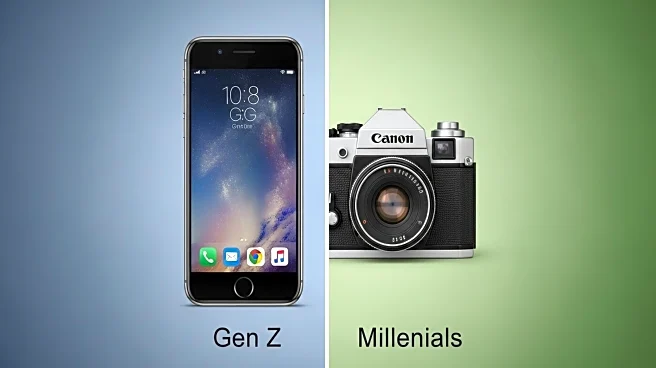What's Happening?
Brands are increasingly adopting gamification strategies to enhance customer engagement and loyalty. This shift involves moving away from traditional transactional interactions to creating experiences that resemble games. Platforms like Roblox have demonstrated
the success of interactive, avatar-driven experiences, prompting brands to integrate similar mechanics into their own ecosystems. This includes developing 3D spaces that are accessible on any device and embedding game-like elements into apps and websites. The goal is to create environments where customers can interact through avatars, complete challenges, and unlock rewards, fostering a sense of community and deeper engagement.
Why It's Important?
The integration of gamification into brand strategies is significant as it aligns with the preferences of younger audiences, particularly Gen Z, who value interactive and playful experiences. By adopting game-like mechanics, brands can enhance customer loyalty and engagement, leading to increased lifetime value and stronger brand affinity. This approach also allows brands to differentiate themselves in a competitive market by offering unique and engaging experiences that resonate with consumers. As the attention economy evolves, brands that successfully implement gamification can transform their customer interactions from static transactions to dynamic, community-driven experiences.
What's Next?
Brands are likely to continue exploring gamification as a means to connect with their audiences. This may involve further integration of Web3 technologies to enable portable identities and rewards across brand ecosystems. Additionally, brands may focus on creating smaller, focused 3D spaces that are easily accessible and require minimal effort from users. As gamification becomes more prevalent, brands will need to balance the complexity of these experiences with accessibility to ensure they remain engaging and user-friendly. The ongoing evolution of digital interactions will likely see more brands adopting these strategies to remain relevant and competitive.
Beyond the Headlines
The shift towards gamification in branding also raises ethical and cultural considerations. As brands create more immersive and interactive experiences, they must ensure these environments are inclusive and respectful of diverse audiences. Additionally, the use of avatars and digital identities may prompt discussions around privacy and data security. Brands will need to navigate these challenges carefully to maintain trust and credibility with their customers. The long-term impact of gamification could also influence broader cultural shifts in how people interact with technology and perceive brand relationships.













